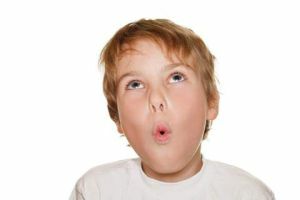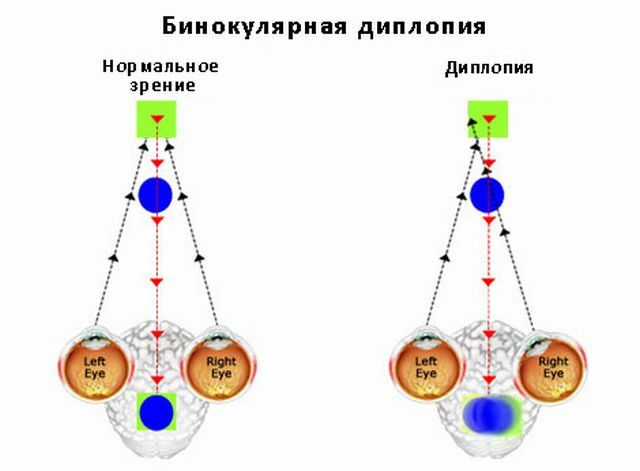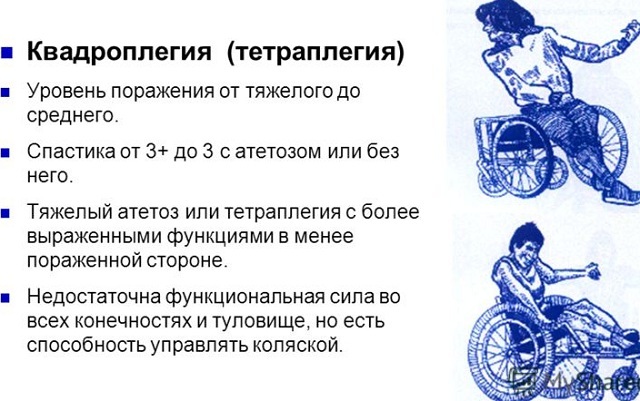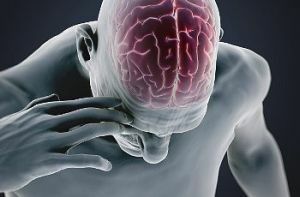 Adioadichokinesis is characterized by the disorder of motor acts, the inability to perform a series of successive movements, rapidly changing one after another .
Adioadichokinesis is characterized by the disorder of motor acts, the inability to perform a series of successive movements, rapidly changing one after another .
In the complex, this process is a complex movement, consisting of several simpler ones.
Based on the results of the conducted studies, the normal result will be considered the rapid cessation of one simple action and the same operational transition to the second one.
This normal indicator is called "dyadochokinesis".
Adiadochokinesis is a specific symptom of cerebellar involvement. Typical for this pathology are disorders of the musculoskeletal system.
It is easy to identify
The patient has an external picture of the manifestation and course of the disease that is standard for all patients:
- In the standing position, the legs are widely apart. This is the maximum stability of the body.
- Hands are apart, the patient rarely balances them. Thus, it is more convenient for a person to keep his balance.
- Patients with this diagnosis try not to resort to slopes, turns of the body and head to the side. This can disorient and lead to a fall.
- If a patient with adioadichokinesis is slightly pushed aside, he may fall and, most interestingly, during the "flight" does not even realize that he is losing stability. Often, the consequences of falls are quite heavy, because a person due to the manifesting symptoms of the disease is not possible to expose limbs for depreciation.
- Patients are difficult to stand in a position where the legs are next to each other. So the center of gravity changes and they( the patients) lose their balance.
- When walking, patients move on level and widely spaced legs. This gait was called "cerebellar", because it was caused by the cerebellum( in particular, its defeat).In appearance, it may seem that a person moves, standing on small stilts. Contemplation of actions can cause a smile among passers-by.
- When moving, the trunk of the patient is in an upright position with a slight deflection back. At the corners, "drifts" are possible, and in some cases even falls of the patient.
- When walking, there is staggering and swaying of the trunk, as if in alcoholic intoxication. This is how dysmetry is manifested.
- The possibility of successive alternation of simple movements disappears, the feeling of rhythm disappears.
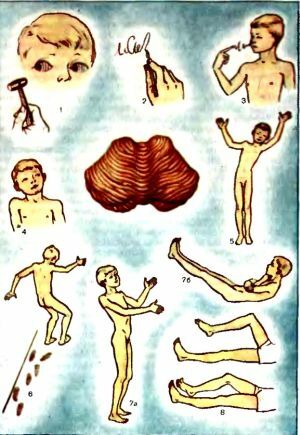
- Gradually, the pathology of speech and handwriting progresses.
- Mimicry disappears, the face gradually acquires the appearance of a smooth mask. In this state, the patient can easily be mistaken for a person who is in a state of alcoholic or narcotic intoxication. This reason often leads to the fact that such people are out of time medical care, when it is edge, as needed.
- In some cases, patients complain of pain in the lumbar region, cervical region, pain in the hands and feet.
- Sometimes there are contractions of muscle tissue, as well as muscle cramps.
- It happens, manifested nystagmus( twitching of the eyeball) and strabismus. On the basis of problems with vision, the patient is hard to concentrate on looking at anything, and the consequence may be headaches and dizziness.
- Because of the onset of illness, patients often suffer from mental disorders and depression.
What are the true causes of the disorder?
The reason for the occurrence of adioadichokinesis lies in the disorders of the functioning of the cerebellum. The problem is that the cerebellum is quite susceptible to negative influences, so it is rather difficult to single out a certain factor that contributes to the disruption of the functioning of this organ.
For example, one of the main functioning units in the cerebellum are the Purkinje cells. They die at the slightest encounter with nicotine, alcohol or other harmful components.
For a patient who used such toxins, it is almost impossible to determine the risk factors and the cause of the disease.
Adiadochokinesis is quite common in cases of injuries, with the onset of a brain tumor, as well as with stroke.
In addition, its appearance may be due to the transferred infectious disease, which caused complication of the cerebral membrane and the cerebellum.
To the appearance of the disorder, it is also possible to tie intoxications that are chronic, and multiple sclerosis.
Many health professionals attribute the causes of this illness to the hereditary factor, but there is no reliable confirmation or refutation of the data on this issue.
 Rehabilitation after a stroke - massage for different parts of the body. How to massage the paralyzed parts of the body, find out in our article.
Rehabilitation after a stroke - massage for different parts of the body. How to massage the paralyzed parts of the body, find out in our article.
Another sure sign that the person is affected by the cerebellum is intentional tremor. What happens to a person with this disorder?
Detection methods
Detection of the disorder occurs through observational studies. The patient is recommended to conduct several tests, on the basis of which the specialist will make a diagnosis.
The most common of these are the following tests for adioadichokinesis:
- Before the patient, at an arm's length, put an object or mark the point to which he should be touched. The patient should move the hands backwards at a rapid pace - forward, while touching the fingers first with the right, and after the left hand with the designated object.
- The patient should touch his fingertip as soon as possible, then take the finger of the doctor and touch the nose again. This complex of repetitive motions must be performed several times.
- The patient should try to depict a motion that resembles a screwing in a bulb or turning a door handle.
- Patient must straighten his arms in front of him parallel to the ground. Now it is necessary to perform alternating flexion and extensor exercises with fingers or supination and pronation of the hands.
Observational examination will show sluggish movements, there may be signs of dysmetry, as well as asynergia.
Diagnosis of the disease is performed not only by external examination and testing of the patient by various exercises.
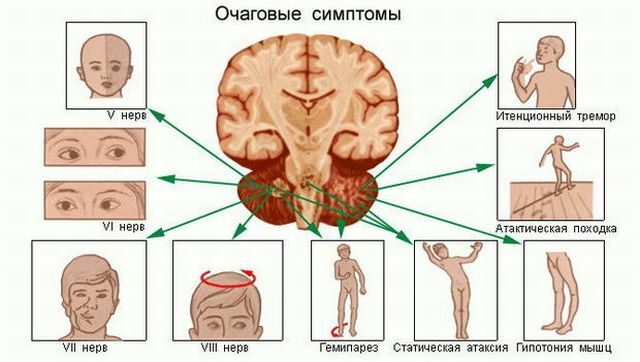
In order to accurately diagnose, a comprehensive examination is absolutely necessary. During the survey results are taken into account for the following indicators:
- blood and liquor analysis;
- ultrasound;
- computed tomography;
- dopplerography of the brain;
- assesses tendon reflexes;
- makes functional tests;The detailed history of the patient is collected by
- .
If necessary, other tests may be prescribed by the doctor. This list is not exhaustive, and can be supplemented at the discretion of a specialist.
Treatment approach
Treatment is performed only after analysis of all the results of the study. The treatment process is predominantly symptomatic.
The group of exceptions includes only diseases that carry infectious lesions of the brain envelopes, as well as cerebellar tissue.
In such cases, it is necessary to immediately begin treatment of the infection, namely, to exterminate the causative agent of the disease.
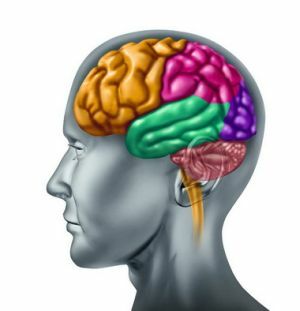 Only after elimination of the cause, the accompanying symptoms are eliminated medically.
Only after elimination of the cause, the accompanying symptoms are eliminated medically.
To treat the symptoms that have arisen in the process of inflammatory activity, medications are prescribed that promote and help blood circulation in the brain, as well as nootropics.
In addition, patients in this category need therapeutic massage, daily gymnastics, and sometimes even a whole complex of physiotherapy.
Infectious diseases have the ability to progress incredibly fast, thereby jeopardizing not only human health, but even his life.

